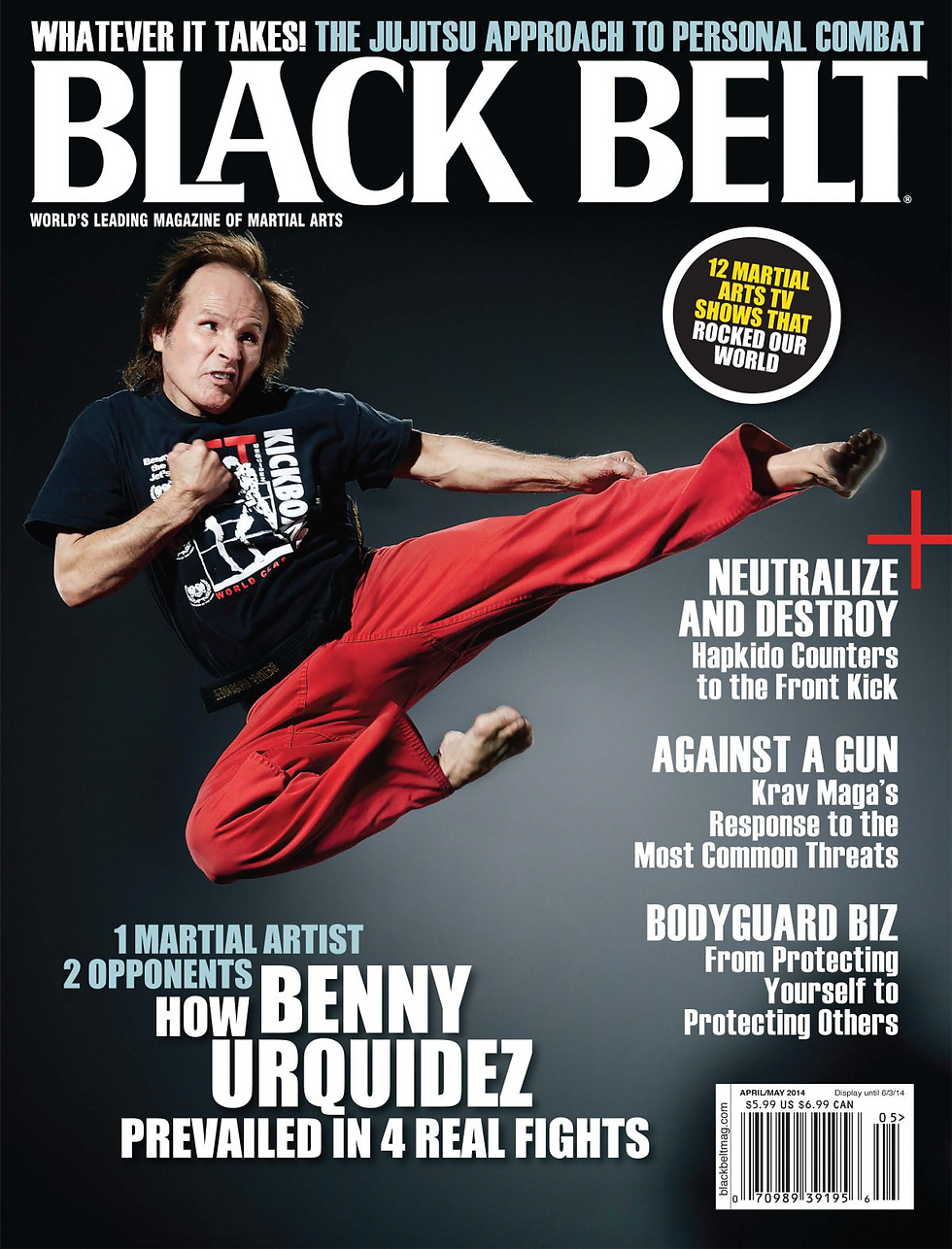- Mark Jacobs
- Apr 2
- 5 min read

In the martial arts, few individuals honestly can be said to have changed history. Among the handful who have, perhaps none generates a wider range of emotions than Rorion Gracie.
Opinions about him vary. Some admire him, while others view him as the type of evil mastermind one typically sees in a Bond film. But no one can deny that he’s exerted as big an influence on the contemporary martial arts scene as anyone alive.
Rorion Takes a Chance
Rorion was the man who took a chance and came to America to spread the gospel of a then largely unknown fighting method called Gracie jiu-jitsu. Interestingly, some have claimed he came, in large part, just to escape the shadow of his older cousin Rolls Gracie.
Considered the premier jiu-jitsu fighter of the 1970s, Rolls was raised in the same household as Rorion, training under Rorion’s father Helio Gracie. While his critics imply this led to a sense of rivalry and even jealousy, Rorion insisted nothing could be further from the truth.
“Rolls was my idol,” he said. “He was like my older brother. Sure, there was some competition there, but I always respected him.”
Rorion said that rather than leaving Brazil to escape Rolls’ shadow, it was Rolls who initially inspired him. “He came here to live with his mother in New York, and when he told me about it, when he described the sensation of taking off in an airplane, it was so exciting I said, ‘I have to experience that.’ Rolls encouraged me to come here.”

An American Adventure
Initially traveling to America in 1969, Rorion, then 17 years old, promptly lost all his money. What was supposed to be a brief vacation became a nearly yearlong adventure that found him flipping burgers at White Castle, attending Jimi Hendrix concerts, and even living on the beach in Hawaii.
“I like the idea of unpredictability,” Rorion said. “I feel comfortable with not knowing what will happen a half-hour from now. I think I learned that early on in my life.”
For a man so comfortable with the unpredictable, though, Rorion Gracie always seemed to have a clear and calculated path he looked to follow. He attended law school, not with the intention of practicing law but with an eye on enhancing his professional image for his return to America, where he planned to firmly establish Gracie jiu-jitsu. In that, he succeeded beyond anyone’s wildest dreams — except his own.
Rorion's son Rener Gracie knows from personal experience the kind of pressure his father must have felt being raised in a family of eminent fighters.

“Growing up for him was probably similar to what I experienced,” Rener said. “There’s a lot of self-imposed pressure. He grew up in this ultra-disciplined family where jiu-jitsu was almost a religion. But he came here on his own where there was no pressure to maintain the family business. It was just his own sink-or-swim attitude of doing it every day, teaching jiu-jitsu one day at a time, that made it work.”
Employed as a house cleaner before eventually getting some extra work in films, Rorion began teaching out of his garage, offering one free lesson to everyone he met. All that time, he never doubted it would lead to much bigger things.
“I told them all I was going to change the world,” Rorion said. “Not for one day did I doubt that. That’s because the system itself is so efficient. It's like a bubble—it’s going to come up to the surface eventually.”
Rorion caught a break when a friendly assistant director got him hired as a technical adviser for the fight scenes in Lethal Weapon, which culminated with star Mel Gibson engaging in a memorable ground fight against bad guy Gary Busey. It was unlike anything previously seen in movies and garnered Rorion some notoriety.
His idea to market Gracie in Action videos, in which he assembled footage of no-holds-barred challenge matches sent to him by friends and family, was another brilliant stroke. In the martial arts landscape of the 1980s, where grappling typically took a back seat to striking and few ever thought about mixing the two, Gracie in Action seemed to strike a chord with younger martial artists looking for more realism in their training.
A hyperbolic article in Playboy proclaiming Rorion “the toughest man in the United States” generated additional buzz. Soon, more than 100 students were coming to his garage to train, with a waiting list of almost 100 desperate to join.
After bringing his brothers over to help him teach, by 1990 he determined that the time had come to open his first academy in Torrance, California. It was also around this time when he began brainstorming with promoter Art Davie for an event designed to showcase jiu-jitsu to a TV audience.
Thus was born the Ultimate Fighting Championship.
When younger brother Royce won the first UFC, the public profile of jiu-jitsu skyrocketed, setting off a chain reaction that led to the grappling boom and the rise of mixed martial arts as a major spectator sport. Not even someone as foresighted as Rorion Gracie could maintain control of things.
As UFC matches began running too long for broadcasts, necessitating the imposition of time limits, Rorion decided to sell his share of the business. With the sport already in distress because of public outcry, no one could envision it becoming the multibillion-dollar industry it is today.
But Rorion said he doesn’t regret getting out when he did. He believed time limits and the use of judges to decide the outcome of fights detracted from his original intent.
“It was no longer a real fight,” he said. “It was entertainment. I understand from a business point of view why they have to do these things, but money was never the reason for my work.”
Rorion said he no longer watches mixed martial arts, but he does note with a sense of satisfaction that almost all modern fighters employ jiu-jitsu as part of their arsenal. He said he also has little interest in what’s happening across most of the contemporary jiu-jitsu scene.
While many now view the style of jiu-jitsu taught at his Torrance academy as outdated, he sees the type frequently taught elsewhere as too competition-oriented, geared more toward athletes rather than normal people interested in self-defense.
“You can’t have jiu-jitsu that just relies on physical attributes,” he said. “My kind of jiu-jitsu is the kind you can do for your whole life.”
Part of the negativity toward Rorion and his style of jiu-jitsu stems from his aggressive moves to control the Gracie brand. At one point, he trademarked the name, which alienated other family members. He also had a falling out with his own brothers, who eventually left his academy to start their own schools.
“Everyone points at the other person and says it’s their fault,” Rener said. “I used to believe the problems were always my uncles’ fault, but as I get older, I see there are two sides to every story. Each one of them thinks they’re right and they’re the best. And they are. Rickson was the best fighter in the family, Royce is the best-known and my dad is the best entrepreneur. When you have a family of fighters and mix that with egos, it can be cause for a lot of disagreement. And growing up in that environment is tricky.”
While Rener and his brothers now tend to most of the daily chores of running what’s become a worldwide operation of affiliated jiu-jitsu academies, complete with an online-learning program that’s generated controversy in its own right, Rorion in a sense has moved on to what he believes is even bigger.
His new goal is to promote the Gracie Diet, which was developed by his uncle Carlos. Rorion said that although jiu-jitsu has touched millions of people around the world, he anticipates the Gracie Diet will eventually affect the whole planet.
While it’s a rather grandiose plan, Rorion fully expects it to happen. “It’s going to change the world,” he said. “I’ve done it once. Why not twice?”




























































































